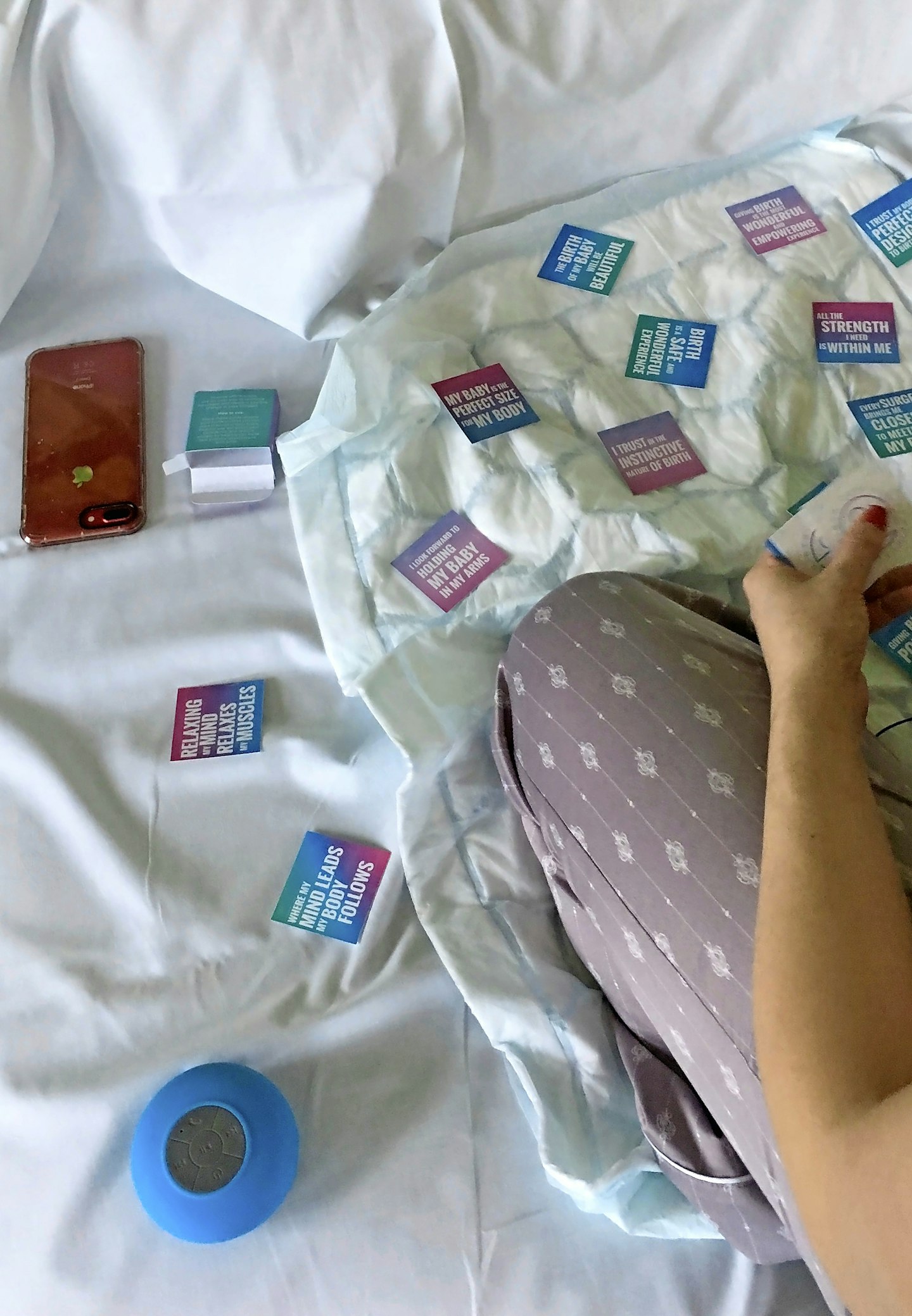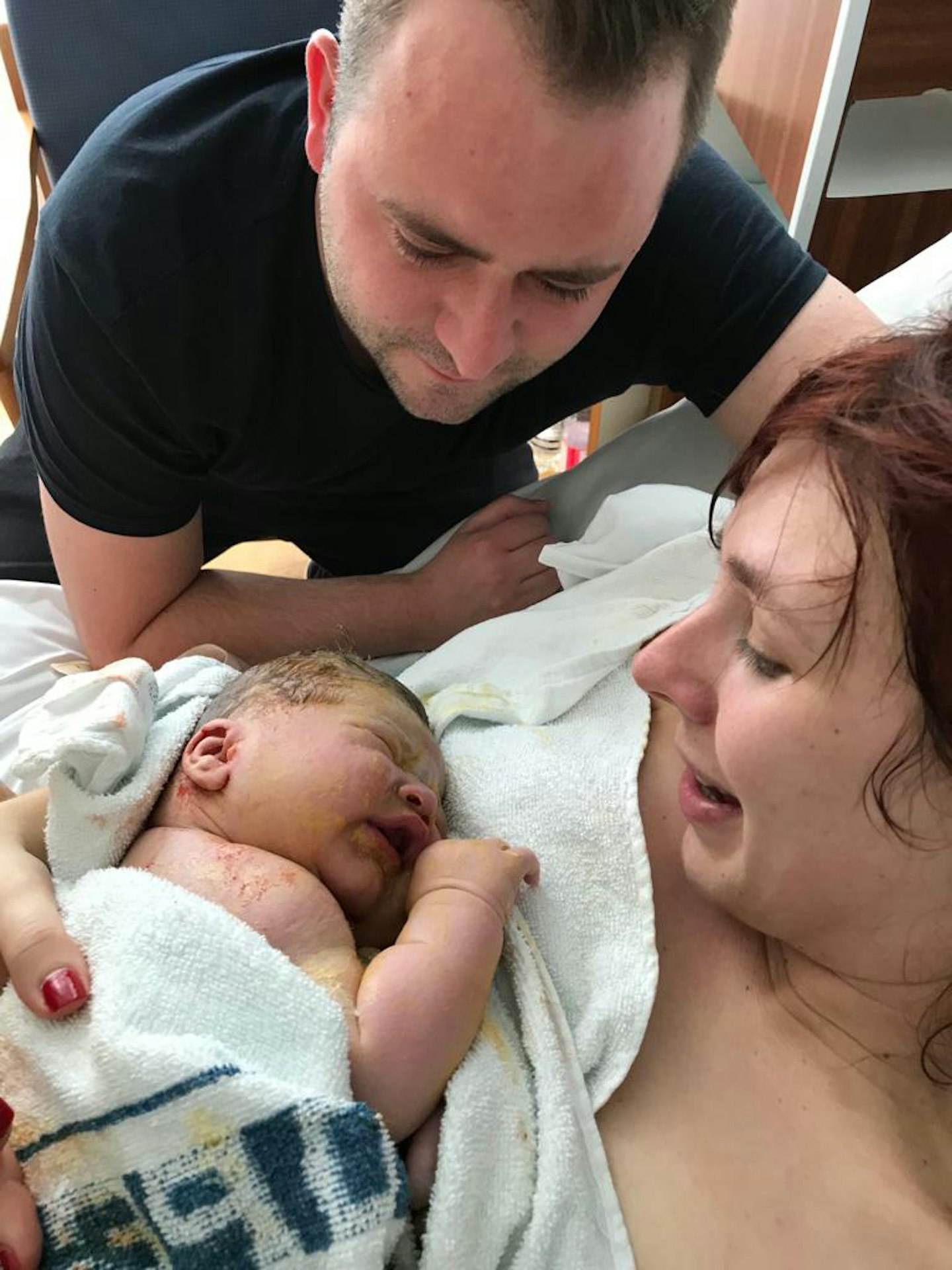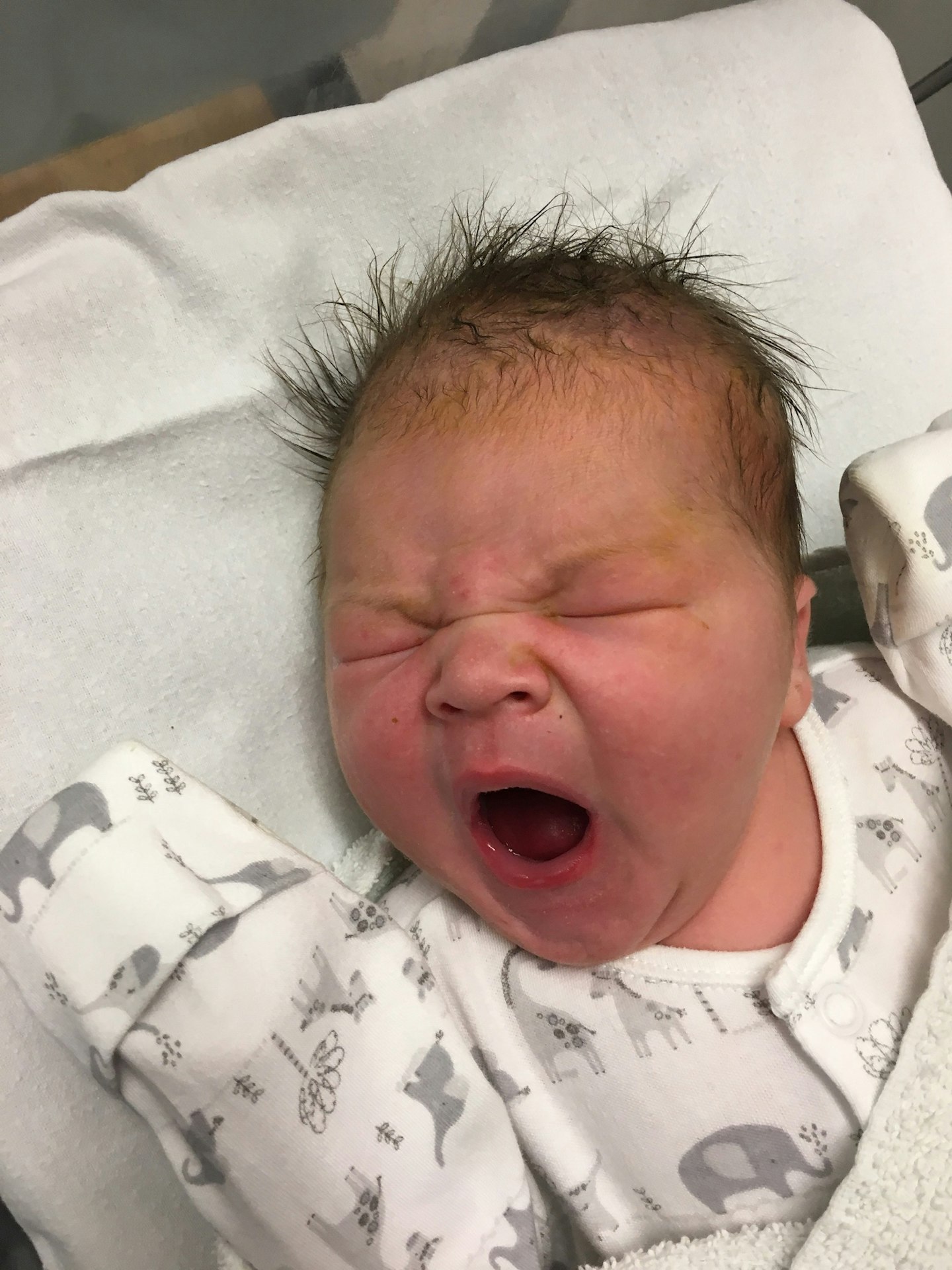Sian-Louise Gardner, 32, a make-up artist, lives on the Wirral with husband Tom and son Ace, seven months.
Before I got pregnant I was scared of needles, hospitals, and most of all, giving birth. All that changed, though, thanks to hypnobirthing.
I went from feeling anxious and panicky to calm and positive, which I put down to an amazing technique I learned on my online hypnobirthing course with The Positive Birth Company. It's BRAIN acronym encourages you to use your ‘BRAIN’ at every stage of labour to gain control, and make the right decision for you.

The B stands for ‘benefits’ – asking yourself what the benefits are of a particular approach. R is for ‘risks’ – what would the risks be? A is about asking yourself what the alternatives would be. I relates to ‘instinct’, and N stands for ‘nothing’, as in what would happen if you did nothing? By going through the acronym systematically when you’re facing a decision in pregnancy or labour, you can make a choice that’s right for you.
I used the technique when choosing where to give birth, and again when I reached full term and was told I’d need a membrane sweep. Using my BRAIN told me that, although the benefits would be that it may bring on labour, I was risking infection. My instinct told me to go with an alternative, so at six days past my due date, I had an NHS aromatherapy massage andprenatal acupuncture, which seemed to work wonders. As crazy as it sounds, I even felt the baby moving down as the needles were going into specific points on my feet and back.
It was 16 hours after that acupuncture session that I felt my first sign of labour.My husband Tom and I had come home from a meal out, and at 9pm I began to feel surges in my bump. Part of the hypnobirthing process is choosing the right language, so instead of ‘contraction’, which conjures up feelings of pain, I used the word surge, which has more positive associations.
Each surge lasted bang on 30 seconds, exactly every two minutes IS THIS RIGHT? SEEMS VERY QUICK FROM THE START?. Instinctively, I grabbed my headphones and listened to the positive birth affirmations downloaded on my phone such as ‘My baby is the perfect size for my body’ and ‘Relaxing my mind relaxes my muscles’. I felt my breathing slowing down as I allowed the positivity to wash over me.

That night, I lay in bed, listening to the affirmations as the surges stayed regular and strong. I hadn’t managed to sleep, and although I was still relaxed, at 7am I knew the time was right to call my midwife. She arrived at 7.30am and I was on all fours on the bed, headphones still in, breathing deeply and steadily. ‘I can’t examine you yet because you’ll be a long way from giving birth,’ she explained. Instinctively, I thought differently, so I used my BRAIN and asked again, and the midwife agreed to examine me. ‘Gosh, you’re actually 7cm,’ she said, surprised. She couldn’t believe how calm I was! It was time to go to the birth centre, and while the midwife left, Tom called my mum. We’d agreed she’d be there too as a support for both me and Tom so once she arrived the three of us headed to the birth centre.
At the centre the calming images of meadows on the walls of my birth room, and the sight of the pool instantly relaxed me. I got in and the warmth of the water felt soothing. By now, I was listening to calming music on my headphones, and despite the strong surges, I felt totally in control. After about an hour and a half of being in the pool, I felt a huge release and realised my waters had gone. Looking down, I noticed a green tinge to the water, and realised that it contained meconium (baby’s poo). This was a sign that the baby may be distressed.
It was time to make a decision about whether to go to hospital. The midwife explained that the decision was purely down to me. I could stay at the centre and give birth there, but if there were any problems with the baby’s breathing at birth due to inhaling the meconium, we’d have to go straight to hospital. This was where my BRAIN really came into its own. The biggest factor for me was the risk – I’d rather go to hospital now than risk the baby potentially struggling after delivery. That tool was exactly what we needed to make an informed decision, and we were calmly transferred to an ambulance.
Tom stayed with me in the back, while Mum drove behind us. Even though the blue lights were flashing, it didn’t feel like an emergency situation. Throughout the journey I sat up and concentrated on breathing deeply and listening to the positive affirmations again. By now, the woman voicing those tracks was like a best friend to me!
At hospital, we were shown to a room, and my blood pressure and the baby’s heart rate were checked. I beamed with relief to see the familiar face of the midwife who’d run my hypnobirthing sessions at the birth centre. She became my ‘cheerleader’, even persuading another midwife to give us an extra half an hour when it was suggested I be hooked to a syntocinon drip to kick-start contractions. I was still 7cm dilated, and if I didn’t progress soon, I’d need intervention, which I wasn’t keen on.
My positive mindset was clearly helping because I never once panicked. When I was examined again, the midwife explained my cervix was thicker on one side. By simply moving it out of the way to prevent the obstruction, she’d managed to get me to 10cm and ready to push. I was so delighted, I could have kissed
her! On all fours on the bed, I felt a sudden and overwhelming urge to bear down and push. The pressure became incredibly intense, and I remember hearing Mum, Tom and the midwife encouraging me. ‘You can do it,’ they said. I held onto the gas and air mouthpiece, inhaling with every surge. It really helped to take the edge off my discomfort.

‘I can see hair!’ the midwife said at one point, and it was the boost I needed. I focussed my energy on breathing downwards to help push the baby out, feeling the increasing pressure of the baby’s head. By this point I was on my back on the bed, Tom by my head, Mum by my side, and with the midwife gently holding onto my knees. With the next massive, overwhelming surge, I felt incredible pressure, then release as the head came out. Then, in the next big push, the body followed.
I heard a high-pitched cry, and knew immediately that the baby was OK and hadn’t inhaled the meconium that would have restricted his airways. Relief flooded through me, and I felt the most overwhelming feeling of elation. I looked at Tom and Mum, who were both crying, and at baby Ace who was perfectly healthy. I felt like the luckiest mum in the world.

On paper, being ‘blue lighted’ to hospital could have been a scary experience, but I really believe that staying calm, and using my BRAIN at every stage, kept me on a positive track. It’s such a useful tool, and I’ve used it every time I’ve needed to weigh up a parenting decision – from choosing whether to breast or formula feed to considering Ace’s routines. I’d recommend it to anyone – it could be the most useful thing you’ll learn.
Three things I’d tell my friends:
-
Even if you don’t consider yourself to be a ‘hynobirthing person’, give it a go. I’ve never met someone who didn’t benefit from it after trying out the techniques.
-
I had a slight tear after birth, and I swear by a spray called Spritz for Bits by My Expert Midwife as it’s really soothing.
-
Pack more baby clothes than you think you’ll need in your hospital bag, just in case you have to stay longer than expected.
Words Rachel Toal
Read more:
